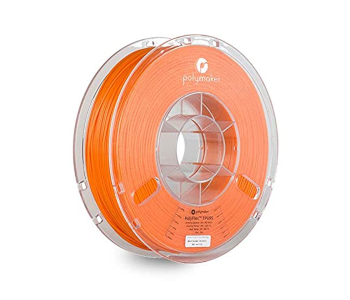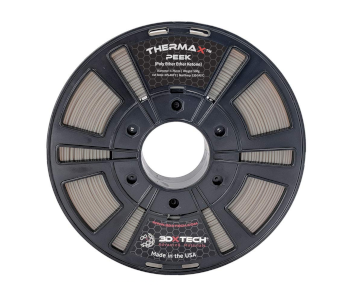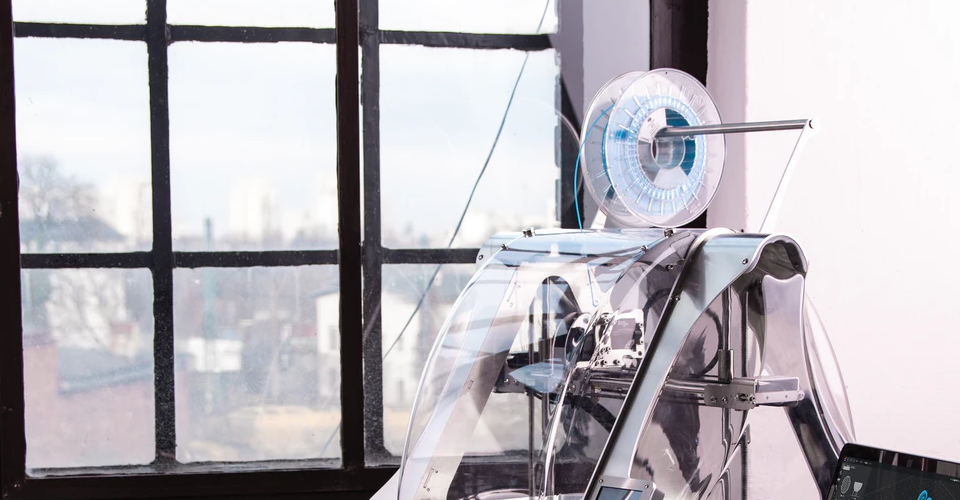Choosing the Strongest 3D Printer Filament
Now and again, we will receive this question – which 3D printing filament is the strongest? Answering this question is always tough because of so many factors. First of all, how do we define strength? Is it in terms of how well a material sustains a load or how it resists an impact? Can it be measured by how the material resists deflection when exposed to heat?
In this article, we will try our best to pick out the strongest filaments that you can buy. Instead of crowning a single filament as the “strongest” one, we will be judging them based on different qualifiers. If you’re on the search for a heavy-duty filament for 3D printing, then you’ve come to the right place.
How to define strength
Before we jump into declaring which filament is the strongest, we first need to define what strength is. Strength can be demonstrated through many aspects. Knowing which type of strength you will prioritize will depend on the specific application of your 3D printed project. Here are just some of the ways to tell that a 3D filament is strong:
- Tensile strength – This is defined as the maximum load that an object can support without breaking. This is an important consideration for projects that are meant for carrying or suspending weights, such as hooks or carabiners. Take note that tensile strength is measured in terms of a pulling force on the object.
- Impact resistance – An impact refers to the sudden application of force, typically when two objects collide. The ability of a material to withstand such application without failure is indicated by its impact resistance. In some cases, the impact resistance of a material is synonymous with its toughness.
- Heat deflection temperature – A trait that is unique to plastics, the heat deflection temperature refers to the temperature at which the material starts to deform under a particular load. This is a crucial factor for 3D printed objects designed to be used in conditions with elevated temperature.
- Chemical resistance – Simply put, the chemical resistance of a material is indicated by how well it resists breakdown when exposed to certain chemicals including acids, solvents, oils, and lubricants. If you foresee your 3D printed part coming in contact with any of these compounds, then you need to make sure that its chemical resistance is up to par. This is also important for parts designed for food contact.
As you can tell by now, there is not a single answer to which 3D printing filament is strongest. With the four standards we have identified, we shall now attempt to come up with a shortlist of the strongest filaments you can buy.
Best in tensile strength
With the exception of a few very specific brands, polycarbonate (PC) is considered by many to be the strongest 3D printing filament in terms of tensile strength. This has been proven by numerous tests that involved suspending weights on 3D printed hooks. Although several other factors affect the performance of a 3D printed polycarbonate part, the base tensile strength of the material is at an impressive 9800 psi.
Based on a test done by Airwolf 3D, a PC hook was able to withstand up to 685 pounds of tensile stress before breaking. At the same test parameters, hooks made from ABS and PLA were only able to handle up to 285 pounds. The results were replicated by Matterhackers, yielding a maximum load of 409 pounds for a PC hook and 154 pounds for a PLA hook.
Along with recent advances in 3D printing technology, the use of polycarbonate has created a new paradigm of what is possible with 3D printing. Nowadays, it is no longer impossible to 3D printing highly reliable safety-critical parts using strong filaments like polycarbonate.
A huge drawback of polycarbonate is that it can be a very difficult filament to work. It prints at very high temperatures of up to 300 °C and is highly prone to warping. It also needs heavy support in terms of bed adhesion and bed temperature. For all the most experienced 3D printing professionals, 3D printing with polycarbonate will always be a substantial challenge.
Best in impact resistance

When it comes to the ability to withstand impact, your best bet would be to go with a flexible filament like Thermoplastic Polyurethane (TPU) or Thermoplastic Elastomer (TPE). Both these terms refer to flexible filament options and can be used interchangeably by filament brands. Technically, TPU is only one example from a subset of flexible polymers which can be referred to as TPEs.
TPU and TPE have the capacity to resist impact because of how well they can deform. This is the mechanism by which flexible filament keeps from failure, even if it has to withstand exceptional and sudden stress. It has also made TPU and TPE viable materials if you need a 3D printed product to take on rubber-like characteristics.
Flexible filament is ideal for 3D printing parts that need to withstand constant motion, such as brackets and hinges. They are also excellent options for gaskets and phone cases, both of which need to conform tightly to the shape of another object. Depending on the brand, some TPU filaments can extend up to 600% of their original dimensions without breaking.
The natural downside of 3D printing with flexible filament is that it lacks rigidity, even when printed at maximum fill density. If you need impact resistance but still need your 3D printed part to be rigid, then polycarbonate is still an excellent alternative. Polymethyl methacrylate (PMMA) is another good option for an impact-resistant filament that is even more rigid than polycarbonate.
Best in heat deflection temperature

A polymer’s heat deflection temperature (HDT) is an indicator of the maximum temperature at which your 3D printed part will remain functional. Obviously, this is something you will need to consider when 3D printing functional parts that are designed to be exposed to elevated temperatures.
When choosing a filament with superior heat deflection properties, it is easier to shortlist the filaments that print at high temperatures. Thus, filaments like PEEK, polycarbonate, nylon, ABS, and PETG quickly become prominent options.
The standard for measuring heat deflection temperature is usually the temperature at which starts to deform under a load of either 0.46 MPa or 1.8 MPa. The higher threshold is often used when designing parts meant for high-performance applications. It is important to make sure that the polymers are being compared using the same metric.
Compared to the other options, PEEK rises to the top with a value of 152 to 172 °C at 1.8 MPa. Polycarbonate ranks just a little lower at 140 °C at the same load rating. Standard ABS has an HDT of only 100 °C while PETG fares even worse at 63 °C.
Nylon is a little harder to describe simply because there are so many nylon variants available out there. The standard Nylon-6,6 only has an HDT of 80 °C. However, there are many more resilient options. A glass-fiber reinforced Nylon has an HDT between 170 °C to 255 °C.
Limiting ourselves to commonly used 3D printing materials, it is clear that either PEEK or polycarbonate are the most viable options. Both of these are quite expensive but still more accessible than some fancy reinforced Nylon material.
Best in chemical resistance

A huge factor in determining the degree of chemical resistance of a polymer lies in its molecular structure. Polymer chains with a large number of unsaturated (double or triple) bonds tend to be more vulnerable to chemical attack. There are a lot of other factors such as the electronegativity of certain functional groups, but that’s already too much detail for this article.
Looking at it in terms of bond saturation, there is hardly any 3D printing filament material that is more chemically stable than Polypropylene (PP). PP is basically a long chain for carbon and hydrogen atoms connected through single bonds. This leaves very little space for substitution by other chemical compounds, although the bonds can still be severed in a high-temperature environment.
PP provides chemical resistance against most organic solvents, oils, acids, and bases. In comparison, the usually reliable polycarbonate may be damaged by certain solvents such as acetone and methyl alcohol.
The excellent chemical resistance of PP is a major reason why it has become one of the most widely used polymers today. If you have plastic food containers at home, then there’s a good chance that it is made out of molded PP.
There is a huge drawback to printing with PP – it is notoriously one of the most difficult filaments to work with. PP has very low surface energy. This means that getting PP filament to stick to the print bed will likely have you pulling out everything from your bag of tricks. From printing slowly to using a heated bed and enclosed build chamber, all of the bed adhesion measures will be necessary to get a PP print to turn out well.
Final thoughts
In determining which filament is strongest, it is important to remember that strength can be judged using several different metrics. Ultimately, it is the application of the 3D printed part which determines its most important physical and chemical properties.
From the results we have compiled, it seems that polycarbonate (PC) is a fairly reliable 3D printing material for high-performance applications. It’s one of the best in terms of tensile strength and also ranks high in heat deflection temperature and impact resistance. If it’s just mechanical viability you want, then polycarbonate ticks almost all the boxes. Just take note that polycarbonate prints at very high temperatures and has a tendency to warp during cooling.
Chemical stability is another matter, as it is the one area where polycarbonate may seem insufficient. Polypropylene provides a very good alternative, although it is well-known to be a difficult filament for 3D printing. But whoever said nice things come easy?


